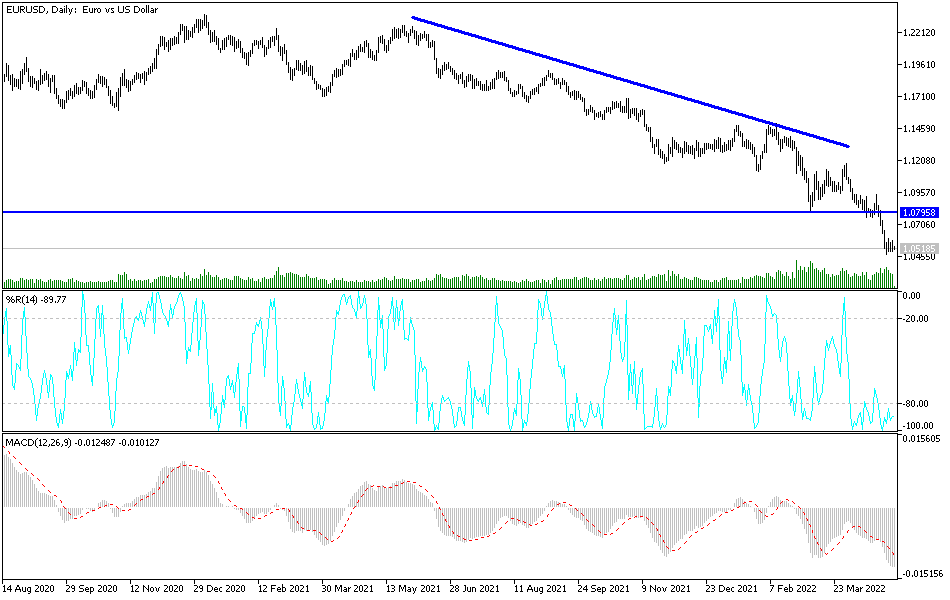The EUR/USD exchange rate entered this important new week's trading near five-year lows after the terrible month of April. It may attempt a corrective recovery in the coming days if the Fed halts quantitative tightening on the way into the summer months. Waiting for that decisive moment, the price of the euro dollar is settling around narrow ranges for several days. It is stable around the level of 1.0520 at the time of writing the analysis, after sharp losses recently, down to the support level 1.0470. Domestic and international factors have strongly affected the price of the euro against the dollar.
Commenting on the performance, Zach Bandel, analyst at Goldman Sachs said, "Potential explanations for the euro's worse-than-expected performance include continued outflows of equities out of the region, broader sovereign spreads, and renewed investor focus on potential energy price disruptions from the war in Ukraine." He added, “It is recognized that there are many factors that skew EUR/USD near-term risks to the downside – including the conflict between Russia and Ukraine, but also the risks of faster US interest rate hikes and pressure on stocks. global, as well as virus-related disruptions.”
Goldman Sachs also says that the single European currency could continue to struggle as long as the above risks overshadow the outlook for the Eurozone while the Bank's recently downgraded forecast indicates that it could take up to six months for the euro to return to its March level of 1.10. From the current depth 1.05. And while the euro will have a long way to go to reverse the -7.4% loss it has incurred so far in 2022, it may enjoy some relief later this week if the Fed's decision on Wednesday has the effect of fending off the recent relentless rally in the states.
US yields will likely be choked as the gap between them and their European peers improves if the Fed today delays the widely expected start of its quantitative tightening (QT) process, which aims to reduce nearly $9 trillion in government bond and mortgage holdings. The Fed confirmed in March that this process could begin as soon as May, but US Federal Reserve Governor Jerome Powell also said, "We will take into account the broader financial and economic contexts when we make a decision on timing."
According to the technical analysis of the pair: There is no change in my technical view of the performance of the EUR/USD currency pair. The general trend is still bearish and the current stability around the 1.0500 support may not be the end as long as the weakness factors of the currency pair exist. The continuation of the Russian-Ukrainian war and its repercussions, in addition to the European Central Bank's abandonment of the passage of raising interest rates, as do the rest of the global central banks led by the Federal Reserve. Factors will continue to push the euro to lower levels, and the closest to it is currently 1.0455 and 1.0300, respectively.
On the other hand, according to the performance on the daily chart, breaking the resistance levels 1.0790 and 1.1000 will be important in causing a change in the current outlook. Today, all focus of the currency pair will be on the US Federal Reserve's announcement of its monetary policy decisions.

